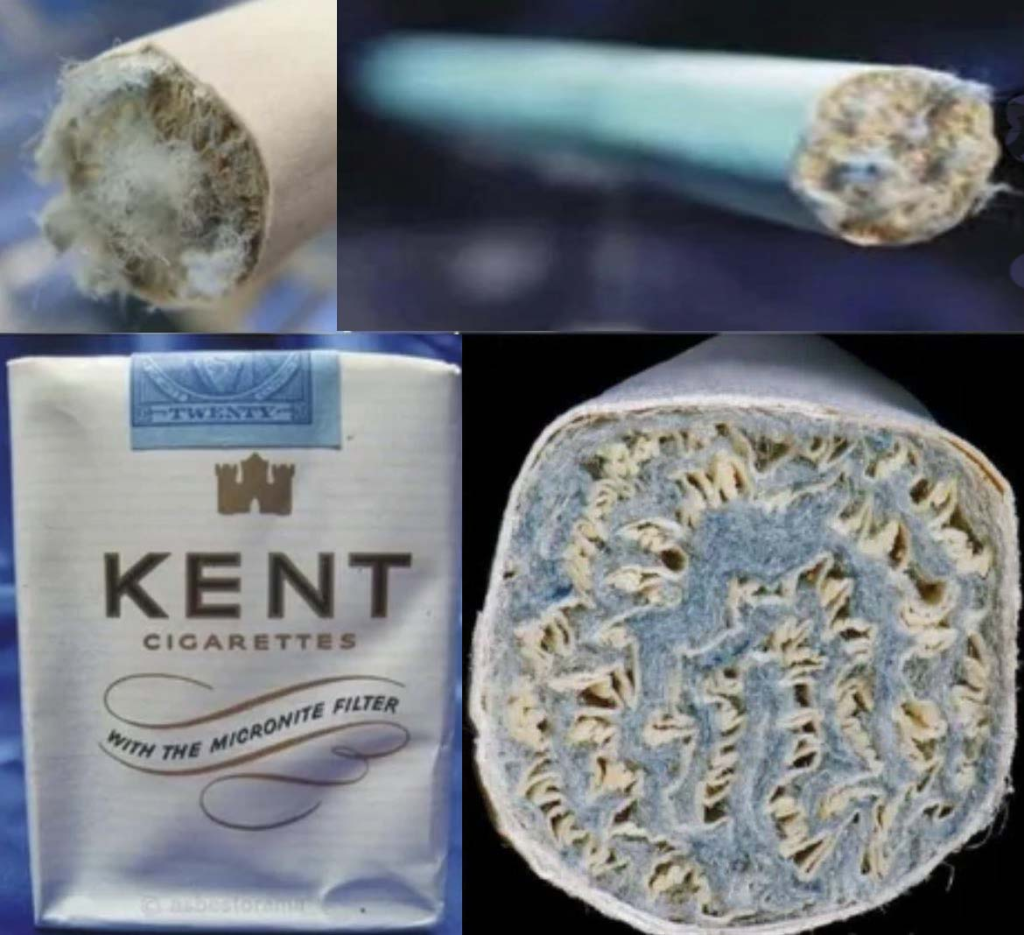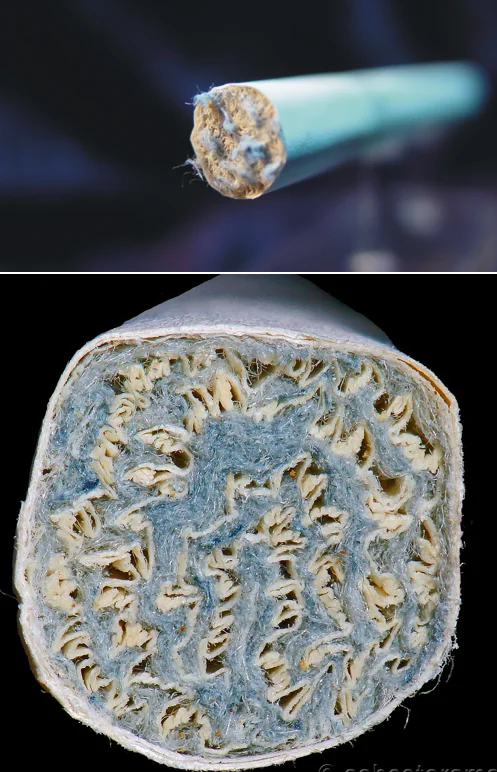In the early 1950s, the dangers of smoking were beginning to gain public attention. Studies were linking smoking to lung cancer, sparking fear and concern. In response, tobacco companies scrambled to reassure their customers that smoking was still safe. One of the most shocking examples of this was Kent Cigarettes’ so-called “safer alternative”—the Micronite filter. Marketed as an innovation that would protect smokers from harmful elements, it was actually one of the d*adliest deceptions in tobacco history.

What Was the Micronite Filter?
From 1952 to 1956, Kent, a brand owned by the P. Lorillard Tobacco Company, introduced the Micronite filter as a revolutionary new technology. Advertisements boldly claimed that this filter would remove harmful substances from cigarette smoke, providing a “healthier” smoking experience. In reality, these filters contained crocidolite asbestos, also known as blue asbestos—one of the most hazardous materials known to man.
Crocidolite Asbestos: A Hidden Killer
Unlike other types of asbestos, crocidolite fibers are incredibly thin and sharp, making them even more dangerous when inhaled. When these microscopic fibers enter the lungs, they can cause d*adly diseases such as:
- Mesothelioma – A rare and aggressive form of cancer caused by asbestos exposure.
- Asbestosis – A chronic lung condition that leads to scarring and breathing difficulties.
- Lung Cancer – A well-documented consequence of inhaling asbestos fibers.
Shockingly, these Kent cigarette filters released asbestos particles directly into smokers’ lungs. With every puff, smokers unknowingly inhaled some of the d*adliest carcinogens in existence.
Video: Kent’s Asbestos Secret: The “Healthier” Cigarette’s Hidden Danger
Marketing the “Safe” Cigarette
Despite the dangers, P. Lorillard aggressively promoted Kent Cigarettes with misleading advertisements. Vintage ads from the 1950s show well-dressed men and women, smiling as they enjoy their “mild” and “safe” cigarettes. Slogans like “Kind to your throat” and “A taste improvement” disguised the d*adly reality. The public, trusting the claims, unknowingly exposed themselves to a silent killer.
One particularly disturbing aspect of this marketing strategy was the use of doctors in cigarette ads. During the 1950s, it was common for tobacco companies to feature physicians endorsing their brands. These ads convinced people that Kent’s Micronite filter was a scientific breakthrough, reinforcing the illusion of safety.
How Many People Were Affected?
Because the effects of asbestos exposure take decades to manifest, the full impact of Kent’s Micronite filter didn’t become clear until many years later. Individuals who smoked Kent cigarettes between 1952 and 1956 had no warning that they were breathing in d*adly asbestos fibers.
In the decades that followed, many former Kent smokers developed mesothelioma and lung diseases. Some estimates suggest that thousands of people suffered asbestos-related illnesses due to Kent’s deceptive marketing. Even more disturbing is the fact that workers who manufactured the filters were also heavily exposed, putting them at even greater risk.
The Cover-Up: What Did the Tobacco Industry Know?

One of the most damning aspects of this scandal is that P. Lorillard and the tobacco industry likely knew the risks of asbestos exposure. By the 1930s and 1940s, scientific studies had already shown that asbestos caused d*adly lung diseases. Despite this, Lorillard used crocidolite asbestos in their filters without public disclosure.
When the dangers of asbestos became undeniable, Lorillard quickly quietly removed crocidolite from their filters in 1956. However, there was no recall, no public warning, and no attempt to inform consumers who had already been exposed. The company simply moved on, leaving thousands of people at risk of d*adly diseases.
Vintage Photos: Asbestos Was Everywhere
Looking back at vintage marketing materials, it’s chilling to see how casually asbestos was once promoted to the public. Old photos and advertisements from the early 20th century show workers handling raw asbestos with bare hands, as if it were a harmless material. Industries, including construction, shipbuilding, and even household products, used asbestos widely, oblivious (or indifferent) to its dangers.
Kent’s Micronite filter was just one example of how asbestos was woven into everyday life—sold to consumers under the guise of safety and innovation. Today, these images serve as a grim reminder of how corporations prioritized profits over public health.
The Aftermath and Legal Battles

In the years that followed, many former Kent smokers and factory workers filed lawsuits against Lorillard, seeking justice for their asbestos-related illnesses. Some victims received compensation, but for many, it was too late. The damage had been done.
Despite the lawsuits and growing evidence against asbestos, the tobacco industry never took full responsibility. Many cases were settled out of court, and the company avoided widespread public scrutiny. It wasn’t until the 1980s that asbestos use became strictly regulated, but for thousands of people, the exposure had already sealed their fate.
Conclusion: A D*adly Legacy
The story of Kent’s Micronite filter is a stark reminder of corporate greed and deception. It highlights how industries, desperate to protect their profits, have sacrificed public health in the name of marketing. What was once sold as a “healthier” cigarette turned out to be a silent executioner, leaving a devastating legacy of illness and suffering.
Today, the danger of asbestos is well known, and regulations prevent its use in consumer products. However, the damage done by companies like Lorillard serves as a powerful lesson: when profit is put above human lives, the consequences can be d*adly.


